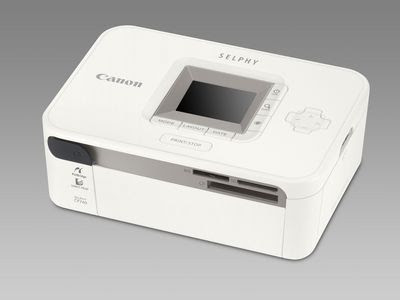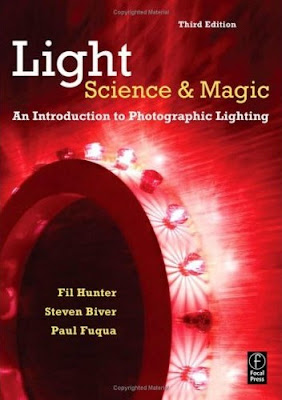25/05/07
Meredith Danluck, Renwick Gallery, New York - Michael Jackson, Jesus Christ...Coca-Cola
23/05/07
Two Million ArtRage Downloads
In May 2007 the total number of downloads of ArtRage - Ambient Design’s free painting application - exceeded two million copies. Since its release in February 2004 more than two million copies of the free version of ArtRage have been downloaded from Ambient Design’s website. Schools, hobbyists, artists and anyone who just wants to mess around with paint have been downloading and using ArtRage Free version.
There have been several major updates to ArtRage Free since its initial release. "This is a fantastic milestone. We’re very pleased so many people have been enjoying using ArtRage. The quality of some of the artworks we’ve seen produced in ArtRage Free version is stunning. We’ve had great feedback from people who became disillusioned with the cost and hassle of using traditional art media but have started painting again in ArtRage." - Andy Bearsley, Technical Director of Ambient Design Ltd.
ArtRage Free version is a fully-featured natural painting application. It has tools which look and feel like their real-world counterpart. For example, the oil paints mix and smear like real oil paints on real canvas. They even leave bristle marks from the virtual brush in the paint strokes. It is easy to use for new users while having features and technology powerful enough for advanced users. The Free version of ArtRage is free to use with no time limits. It is also has no adware, spyware or other malware. It is available in English, French and German versions, for Windows and as a Universal Binary for MacOSX.
Updated Post / Archive
22/05/07
Liliana Porter at Valentina Bonomo Gallery, Roma - For Instance
18/05/07
Alain Kirili, Musée de l'Orangerie, Paris - Kirili et Les Nymphéas
16/05/07
SilverFast 6.5 Automatic IT8-Calibration
The latest SilverFast v6.5 by LaserSoft Imaging now includes the automatic IT8- calibration that ensures better color correctness of the scanner.
15/05/07
National Art Gallery Singapore: Architectural Design competition shortlist
- Asia-Pacific (excluding Singapore), and
- Singapore.
The Shortlist
CEO, Urban Redevelopment Authority, Singapore
President, Guimet Musée National des Arts Asiatiques
Chairman, Singapore Art Museum and Board Member of the National Heritage Board
Immediate Past President, Singapore Institute of Architects
- Appointment of Architect for Singapore’s National Art Gallery, May 2008
- Strategic directions set for National Art Gallery, Singapore, March 2009
13/05/07
Stephan Balkenhol at Galleri Lars Bohman, Stockholm
Galleri Lars Bohman, Stockholm
May 12 - June 17, 2007
GALLERI LARS BOHMAN
Karlavägen 16, 114 31 Stockholm
www.gallerilarsbohman.com
11/05/07
OKI Printing Solutions progresse significativement sur le marche de l’ impression laser couleur
Alors que la millionième imprimante couleur sort de ses usines, le constructeur japonais se place en 2006 au 2ème rang sur le marché mondial de l’impression laser couleur professionnelle (source IDC 2006 Q4).
Autres résultats communiqués par IDC : OKI Printing Solutions se positionne en France au 4ème rang des constructeurs sur les imprimantes laser couleur tous segments confondus. Il atteint la 2ème position pour le segment A3, cette percée significative confirmant l’excellent positionnement de la dernière-née des imprimantes A3 OKI, la C8600, lancée sur le marché en novembre dernier.
En parallèle à ces résultats prometteurs pour l’année 2007, OKI Printing Solutions, annonce également avoir atteint le million d’imprimantes couleur LED conçues au sein de ses usines.
Cette millionième imprimante couleur – l’imprimante A4 C3400 – est sortie de l’usine thaïlandaise d’OKI Printing Solutions, aujourd’hui à l’origine de 47% de la production mondiale du constructeur.
Cet événement constitue l’un des facteurs qui explique la progression du groupe au 2ème rang mondial des imprimantes laser couleur sur le marché des entreprises sur l’ensemble de l’année 2006 (source IDC 2006 Q4).
Ce résultat exceptionnel s’explique notamment par une croissance avoisinant les 20% sur le segment des +10 ppm, chiffre qui augmente chaque année depuis ces 4 dernières années (source IDC). Grâce à sa technologie LED monopasse, OKI Printing Solutions a réussi à s’imposer au 2ème rang mondial sur ce segment très porteur, ce dont témoigne le succès mondial des séries C5000, première imprimantes couleur +10 ppm à moins de 1000,00 € commercialisées en France en 2003. OKI Printing Solutions occupe également la 2ème place en France sur ce même segment avec 14.1 % des parts de marché.
Parallèlement à la production de ce million d’imprimantes couleur, OKI Printing Solutions a également fabriqué 7 millions d’unités monochromes, 22 millions d’imprimantes matricielles et plus de 100 millions de rubans pour ces imprimantes. « Un résultat significatif, si l’on rappelle que OKI adresse uniquement le marché des entreprises », commente Mikihiko Maeno, Président Directeur Général d’OKI Data Corporation.
Il ajoute : « En 2006, nous avons étendu notre production avec de nouvelles usines en Asie et en Amérique centrale, afin de pouvoir répondre à une croissance considérable de 600% des ventes de produits couleur depuis ces trois dernières années. Et nous allons poursuivre cette extension avec de nouvelles implantations au cours de l’année 2007 ».
OKI Printing Solutions a par ailleurs pour objectif de renforcer sa gamme de produits avec cette année le lancement de nouveaux produits couleur basés sur la technologie High Definition Color.
www.oki.fr Oki Printing Solutions - Communiqué de presse - 11.05.200708/05/07
Imprimante Canon SELPHY CP740

07/05/07
AP Images distribute Ebony and Jet Photos
Other posts on this blog about AP Images
- About Associated Press Images December, 2008]
- AP Images launches new photo Web site [September, 2006]
- Ian Cameron appointed vice president of AP Images [June, 2006]
- AP photojournalists win Pulitzer Prize [April, 2005]
- The international photojournalist collective VII and the world's largest news cooperative, The Associated Press, have agreed on a distribution deal [September, 2004]
Last Update: 08.12.2008
05/05/07
Introduction to Photographic Light

Related post : Lighting Techniques for Middle Key Portrait Photography
Book Cover (c) 2007 - Focal Press - All rights reserved
01/05/07
Ignacio Pardo: Senescencia at CGAC
IGNACIO PARDO
SENESCENCIA
Centro Galego de Arte Contemporanea
A pair of pupils, a woman’s breasts, wanderers on a beach, and musical instruments – these are the protagonist icons in the work of video artist Ignacio Pardo (Lugo, 1947). Simple iconography, though derived from richness in its formal use as well as in expressive aspects. Senescencia: Ignacio Pardo, the exhibition organized by the CGAC and curated by Cristina Prego, will gather the video artist’s production since the 1980s, and a new work will be completed in situ for the Center.
Ignacio Pardo’s utilization of video as a means of expression, his objects of visual desire, and his personal option when it comes to facing the world of art have forced his works to stay, since the 80s, on the margins of exhibition circuits. However, despite the fact that he is currently a docent, Ignacio Pardo has not stopped experimenting with the camera, to which he attached himself (artistically speaking) in the times of the Super 8 in the 1960s. Loyal to an undoubtedly personal aesthetic, Pardo, who takes his influence from the historical avant-garde models, tends towards extravagance, shadows, and the apparently occult.
Senescencia: Ignacio Pardo will take us along the continuous line, up to the present, of the artistic production that began in the 1980s when the artist adopted video as a means of creation and began making up his own rules. After early theoretical efforts in the 1960s, when the role of video in art was conceptually and historically analyzed, and after its marginalization in the 1970s in favor of a pictorial resurgence, it was in the 1980s that video advanced into multimedia territory and appeared on the international scene, often associated with music. Singular in this context, the experimental works of Ignacio Pardo are represented with the piece Parpadeo from the exhibit La imagen sublime (1987), promoted by the museum Reina Sofía and curated by Manuel Palacio, together with standard video artists such as Antoni Muntadas and Carles Pujol; occasional artists, like El Hortelano and Juan Navarro Baldeweg, and apprentices of the unpredictable future like Xavier Villaverde and Anton Reixa. In those years, Ignacio Pardo won the Certamen Nacional de Video in Vitoria (1986) and was present at ARCO (1988-89), as well as at other international events such as the Documenta de Kassel and the Sao Paulo Biennial.
Later, his work was included in the show Senales de Video (which was curated by Eugeni Bonet in 1995 for the Reina Sofía, and which traveled to other Spanish centers) and in Novos Caminos: Ameazas y promesas da arte electronica (Casa das Artes, Vigo, 1998). Eroticism and new technologies joined together in Igncio Pardo’s works in the 90s, and he became considered one of the country’s pioneers in digital animation with works like Ninfografia (1992). In recent years, Ignacio Pardo has used 3D animation to alter scenes in works like Paseantes (2003), in his obsession with affirming that darkness and death, can, at any moment, break with the fragility of life. At the CGAC, we can also see recent works such as Vientre, Agua, y Fuego, created in 2007.
This exhibition is a unique opportunity to examine the career path of one of the pioneers of video art in Galicia who, as the exhibit’s title suggests, redefines concepts like darkness, aging, and the anguish of life with his images. In conjunction with the exhibition, a catalog will be published, including texts from curator Cristina Prego, CGAC director Manuel Olveira, and specialist in Spanish video art Eugeni Bonet.
Senescencia: Ignacio Pardo
May 3 - July 1, 2007
Centro Galego de Arte Contemporanea
Galician Center for Contemporary Art
Valle Inclan s/n - 15704 Santiago de Compostela
Updated Post
